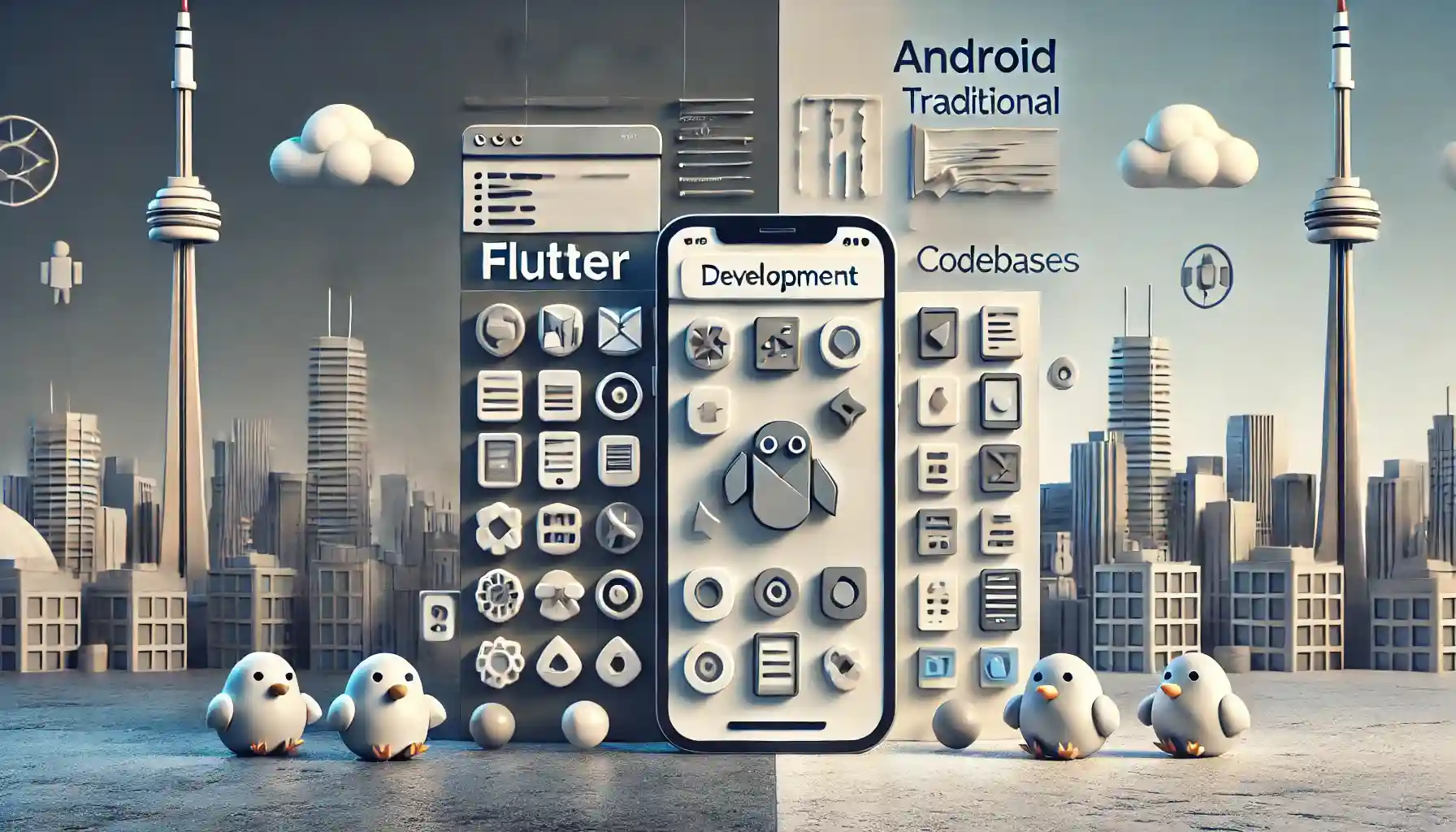
Over the past decade, the trend of mobile application development has gradually changed, and nowadays, one of the key dilemmas developers have is whether to stick to the traditional ways or seek shelter in newer frameworks like Flutter. Therefore, this debate has been noticed among developers; especially in the tech-savvy city of Toronto, a lot of businesses are huge on mobile apps when it comes to reaching their customers.
Each has its merits in the case of reasons why traditional development existed or for what reason Flutter has been released.
Today, we are going to look into how Flutter stacks up against traditional development—with some juicy insights from the best mobile app experts of Toronto. This comparison is going to come in handy both for a business person developing an application and a developer when the final choice has to be made.
Traditional Development: The Backbone of Mobile App Development
This was a traditional way of mobile development and normally meant native app development for iOS with Swift or Objective-C and Android with Java or Kotlin. In this approach, a developer has to maintain several code bases for different works corresponding to different platforms. That was the main reason why a lot of developers were utilizing native code in their work over the years.
Advantages of Traditional Development
- Performance: The biggest positive for traditional development is its performance. Native applications having all the access to device hardware, the execution is much faster, animations smoother, and therefore much better responsiveness. Traditional development is usually the way to go with the applications that require high-performance features, as would be the case with games or augmented reality.
- Platform-Specific Features: Each OS comes with its line of features and design guidelines. Native development will ensure that an application utilizes the most applicable features to their fullest capability for seamless interactions and performance in any given platform. An example would be, iOS users are accustomed to some navigation patterns, whereas other users are accustomed to another flow.
- Miverse Experience: This type of development has been there for so long; hence, there is a lot of resources, libraries, and tools. Many developers have vast experience in iOS and Android development. As much as it may be hard to find a business developing best mobile app development company toronto, they are available.
Disadvantages of Traditional Development
- Costlier: It unnecessarily increases expenses and time by having to keep up two codebases. You are literally paying for two applications-an iOS application and an Android application. That increases overall cost regarding development time and maintenance that could be costly and sometimes not so good for startups and businesses working on tight budgets.
- Slower Time-to-Market: Since code needs to be written twice—once for each platform—time-to-market is slower as compared to any cross-platform development option, say Flutter. In today’s competitive landscape, when businesses must get up and running as soon as possible to try and grab pieces of the market, conventional development becomes a bottleneck.
Flutter: The New Kid on the Block
Flutter is a modern cross-platform development framework by Google. It allows for the deployment of apps in both iOS and Android from one codebase. From its very first release, it has always been in high demand because it can reduce development time and cost without losing near-native performance.
The Benefits of Using Flutter
- One Codebase for Multiple Platforms: Among the distinct advantages Flutter provides is the feature to write one codebase and deploy that same code for iOS and Android. It saves a lot of time and cost in development and, therefore, has been in demand among startups and small businesses. Large companies recently have approached a flutter app development company in Toronto to get their apps into the market quickly and efficiently.
- Fast Development with Hot Reload: With the ability of hot reload in Flutter, developers are able to instantly view changes without needing to restart the application. This could significantly speed up development because the feedback loop between writing code and seeing what happens is minimized.
- Customizable Widgets: A rich library of different kinds of widgets allows Flutter to change settings and enables developers to bring their imagination into life. Be it Android or iOS, Flutter’s widgets automatically configure themselves to adapt to different design languages and provide a consistent user experience across different devices.
- Cost-Effective: If your business is chasing the value for money spent, then Flutter will perfectly fill the bill. As in the previous point, you do not need to maintain two Android and another iOS team of developers, as with Flutter, you can have only one. This means that Flutter is really a great choice for SMEs or whoever is looking for cooperation with a Toronto mobile app development company and is seeking for ways to make quality without going over the estimate
Cons of Flutter Development
- Complex Application Performance: This is where Flutter really does fairly well on the performance front, though it’s hardly going to get to native apps with highly complex applications like 3D games or hardware interaction-heavy apps. For example, the applications of the future with AR/VR capabilities may bound the performance, compared to traditional native development.
- Incomplete Ecosystem and Limited Libraries: While growing at a very fast rate, the ecosystem and third-party libraries around Flutter have yet to be as rich as in native development. In some few functionalities, the developer has to develop his solution sometimes to the extent that the time saved for the framework is made null.
- Platform-Specific Features: Even with supporting both platforms from a single codebase, there may be work that could be done to add in more platform-specific features. If your application requires deep integration with platform APIs—like direct access to some device-specific hardware or leveraging OS-level features—a native solution may still be your best bet.
Toronto’s Top Mobile App Experts Weigh In
In synchronization with technology and advancement, a city of Toronto has businesses and developers look at what can be done differently or better always. What do top-rated Toronto mobile app experts suggest when choosing either Flutter or traditional development?
- For Startups and SMEs: Being a startup or small business means creating an application within the minimum period while saving big money using Flutter, say experts in Toronto.
There is a good chance to develop and deliver on both platforms with only one codebase, which can bring costs down but without much compromise on the side of performance or user experience. Most recommend collaborating with a reputed Flutter app development company in town to have the most cost-efficient and speedy results. - Performance-Centric Apps: If the task that needs to be performed by that app is gaming, AR/VR, or some heavy computation, then possibly native development may be the way to go. According to experts, even large business entities or any person in need of performance-based apps should take to traditional development so that such apps perform as flawlessly as needed.
- In Case of a Long-term Project: If your project is huge with many updates planned, really long-scaling projects might be done more easily in the traditional approach to development. Native development tools come with more mature ecosystems and support that could be crucial in maintaining complex applications over time.
Conclusion
The Flutter case is always drawn into comparison, the purpose, need, and budget of normal development. While traditional development offers incomparable performance and platform-specific optimizations, Flutter is a cost-effective and more time-efficient alternative that would suit all kinds of applications. For many businesses in Toronto, especially startups and SMEs, working with a mobile app development company in Toronto that specializes in Flutter can be smart toward getting to market fast without having to break the bank. According to Toronto mobile app specialists, the best choice is traditional development since it relates to maximum performance or special capabilities available on one platform. These two subtle understandings are the insights of which direction your next mobile app project should take.
Read more on WCCO







